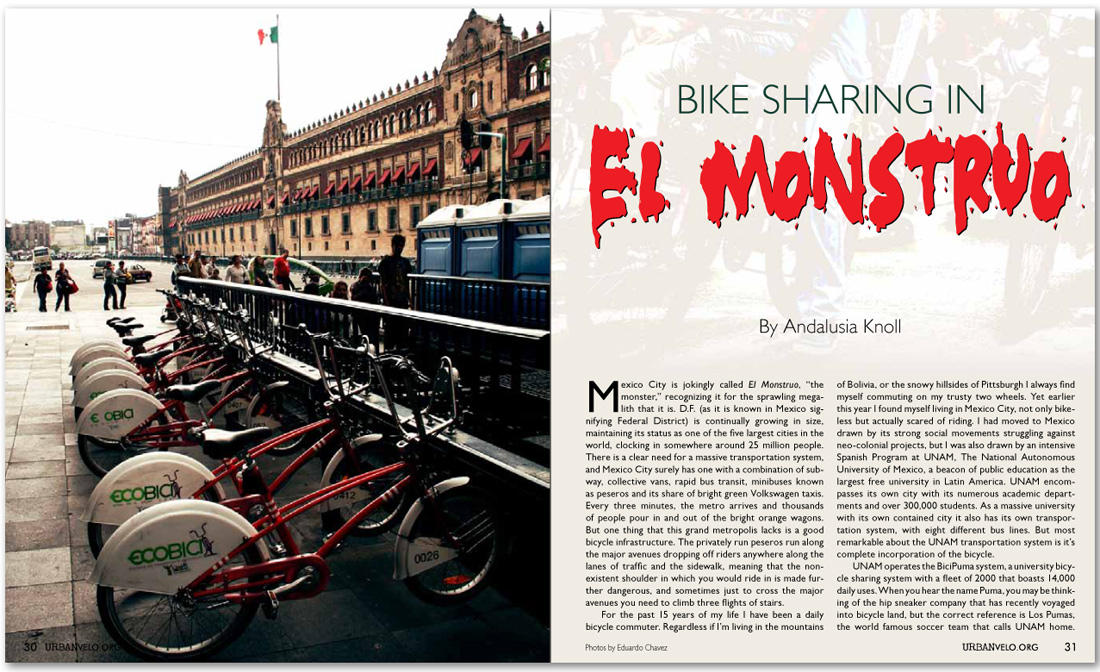


Bike Sharing in El Monstruo
By Andalusia Knoll
Photos by Eduardo Chavez
Mexico City is jokingly called El Monstruo, “the monster,” recognizing it for the sprawling megalith that it is. D.F. (as it is known in Mexico signifying Federal District) is continually growing in size, maintaining its status as one of the five largest cities in the world, clocking in somewhere around 25 million people. There is a clear need for a massive transportation system, and Mexico City surely has one with a combination of subway, collective vans, rapid bus transit, minibuses known as peseros and its share of bright green Volkswagen taxis. Every three minutes, the metro arrives and thousands of people pour in and out of the bright orange wagons. But one thing that this grand metropolis lacks is a good bicycle infrastructure. The privately run peseros run along the major avenues dropping off riders anywhere along the lanes of traffic and the sidewalk, meaning that the non-existent shoulder in which you would ride in is made further dangerous, and sometimes just to cross the major avenues you need to climb three flights of stairs.
For the past 15 years of my life I have been a daily bicycle commuter. Regardless if I’m living in the mountains of Bolivia, or the snowy hillsides of Pittsburgh I always find myself commuting on my trusty two wheels. Yet earlier this year I found myself living in Mexico City, not only bike-less but actually scared of riding. I had moved to Mexico drawn by its strong social movements struggling against neo-colonial projects, but I was also drawn by an intensive Spanish Program at UNAM, The National Autonomous University of Mexico, a beacon of public education as the largest free university in Latin America. UNAM encompasses its own city with its numerous academic departments and over 300,000 students. As a massive university with its own contained city it also has its own transportation system, with eight different bus lines. But most remarkable about the UNAM transportation system is it’s complete incorporation of the bicycle.
UNAM operates the BiciPuma system, a university bicycle sharing system with a fleet of 2000 that boasts 14,000 daily uses. When you hear the name Puma, you may be thinking of the hip sneaker company that has recently voyaged into bicycle land, but the correct reference is Los Pumas, the world famous soccer team that calls UNAM home.